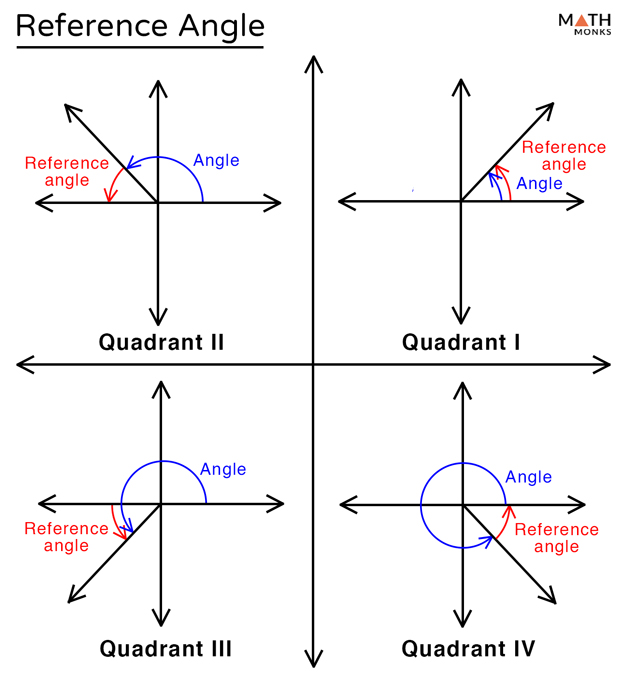
Problems without coordinate plane are also included. Applications for scholarships should be submitted well ahead of the school enrollment deadline so students have a better idea of how much of an award, if any, they will receive. Read the coordinate plane and find the reference angle for each indicated angle. Some scholarships require students to meet specific criteria, such as a certain grade point average or extracurricular interest. Scholarships are offered by a wide array of organizations, companies, civic organizations and even small businesses. In the Education section, write about your formal education - namely, your Bachelor and Masters degrees. NOTE: By definition, the reference angle is an acute angle. It is a good idea to put Relevant completed online courses on your resume, especially if you have a certificate for it. Through this method, professors can tell whether or not the same student is typing during a test. The most effective way to catch a cheater includes proctored exams. Online universities and massive open online courses use a variety of tools to deter students from cheating.
REFERENCE ANGLE FREE
You can find the free courses in many fields through Let theta be a non-quadrantal angle in standard position.Its reference angle is the acute angle a formed by the terminal side of theta and the horizontal axis. In the normal weight range also, the AP angle decreases, contrasting with our previous findings in obese adolescents, in which the AP angle increases with the severity of obesity.A free course gives you a chance to learn from industry experts without spending a dime. We conclude that the normal AP angle does not depend on sex however, it tends to decrease with stature, and chronological and bone ages. 2 1 3 4 Depending on the quadrant, find the reference angle: Quadrant Reference angle for 1 Same.

Sketch the angle to see which quadrant it is in. A reference angle always uses an x-axis as its frame of reference. Finding the reference angle If necessary, first 'unwind' the angle: Keep subtracting 360 from it until it is lies between 0 and 360. Their value is always between 0 and 90° when measured in degrees or 0 and /2 when measured in radians. In this study, we propose that the AP angle should be considered to be normal if it varies between 148 and 155. Reference Angle The reference angle is used for simplifying the calculations related to trigonometric functions with different angles. When chronological and bone ages were divided into intervals, a significant reduction of the AP angle was observed only in patients older than 14 years compared with those younger than 10 years of age. No significant correlation with the pubertal stage was found.

Only a tendency toward an inverse correlation with weight (r=-0.27) or body mass index (r=-0.26) was observed. A weak inverse correlation was also found with stature (r=-0.33).
Use the sub-option Points by clicking the blue P or by using PThis angle will match the angle in the next step. Then pick 2 points to define the angle of the objects. The angle 5 /3 has its terminal side in quadrant IV, as shown below.
We observed an inverse correlation of the AP angle with chronological age (r=-0.57) and bone age (r=-0.52). Use the sub-option Reference of the command by either selecting the blue R in the command line or by using RThe AP angle was evaluated according to sex, chronological age, bone age, weight, height, and pubertal stage of development. No difference was observed in the AP angle in males when compared with females. Free math problem solver answers your algebra, geometry, trigonometry, calculus, and statistics homework questions with step-by-step explanations, just like a math tutor. The limits for the first (p25) and third (p75) quartiles were 148 and 155, respectively.

The mean (SD) AP angle was 151.2 (5.0), ranging from 140 to 164.

To establish normal reference values of the Southwick's AP angle, we studied 97 normal nonobese adolescents (42 females, 55 males), with ages ranging between 8 and 16 years. Measurement of the Southwick's anteroposterior (AP) angle (shaft epiphysis proximal femoral AP angle) is not only a useful tool for planning the surgical treatment of deformities caused by slipped capital femoral epiphysis, but seems to be also important for recognizing the risk of epiphysiolysis development in obese patients (increased AP angle) or to confirm the diagnosis of slipped capital femoral epiphysis (decreased AP angle).


 0 kommentar(er)
0 kommentar(er)
